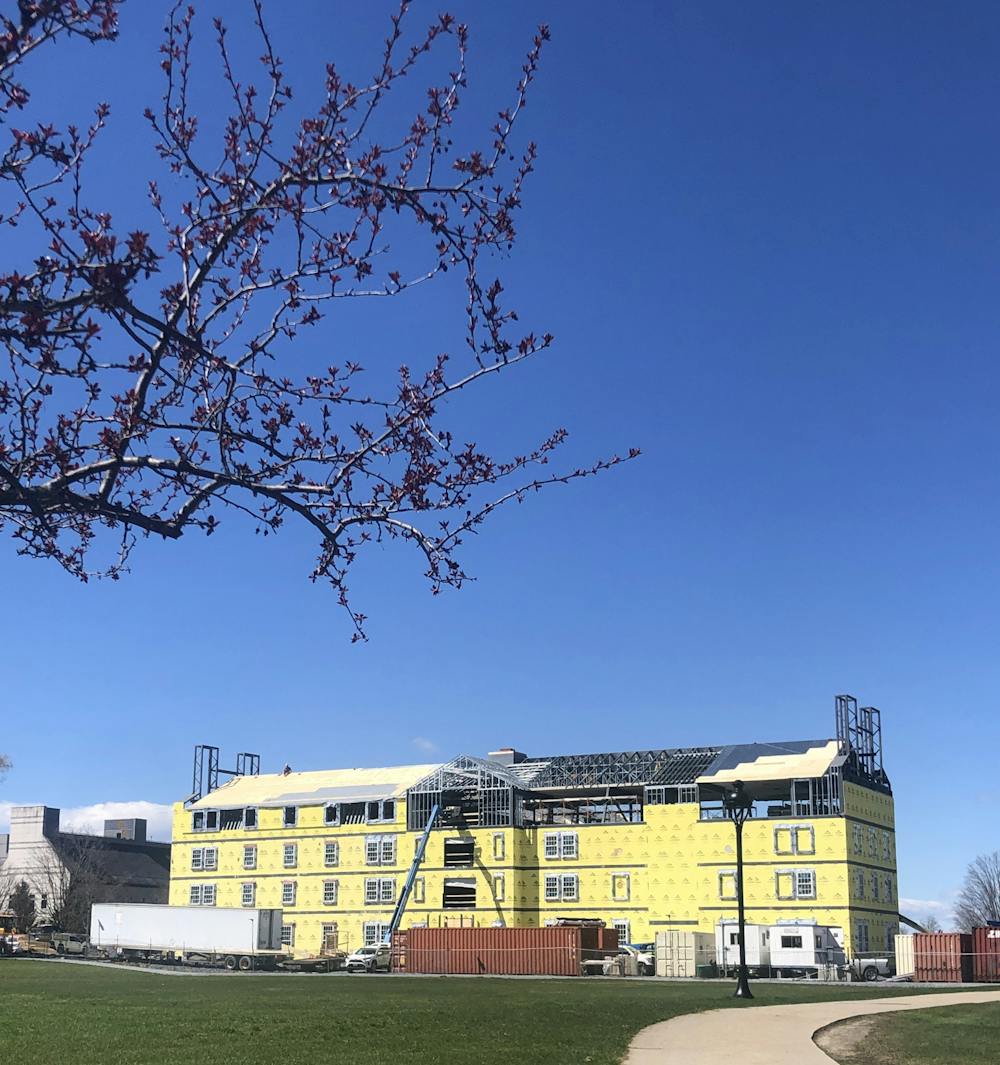From Facilities Services to Environmental Affairs at Franklin Environmental Center to the architects designing our new buildings, people across campus have been working toward energy conservation. This behind the scenes work is one of the four core pillars of Energy 2028, Middlebury’s sustainability initiative. Among other goals, the college is seeking a 25% reduction in energy usage on the core campus by 2028 and 100% renewable energy sourcing by 2028.
Renewable energy sourcing is up to the college, but energy usage and conservation is up to us. We need people across campus to buy into Energy 2028, work to reduce their energy use and dream up innovative energy solutions if we are going to hit that 25% goal in four years. This will involve both individual choices and the conversations we have with peers, family and friends about energy conservation.
This year marks the halfway point of Energy 2028. As of the end of fiscal year 2023, Middlebury had reached a nine percent reduction in core campus energy consumption, as compared to the fiscal year 2018 baseline. While that is a great start, we need to kick into a higher gear for the remainder of the Energy 2028 initiative.
The strong efforts from people within Facilities Services and Environmental Affairs have to be complemented with commitment from the student body, faculty and staff. It can be easy to write off our individual actions as meaninglessly tiny in comparison to the massive carbon footprint of corporations and billionaires. As an environmental studies major, I’ve spent countless classes discussing whether individual choices are important in making a dent in climate action and global carbon emissions.
But on a small campus like Middlebury, which has very specific energy conservation goals and only a few thousand people to carry them out, our personal actions really do matter.
I spoke with Dean Ouellette, energy and technology manager in Facilities Services, about what her department has been working on with regards to energy conservation and efficiency on campus. I found that smart heating systems are working to save energy, but students, faculty and staff can do more to use less energy.
The conventional approach to energy conservation for large institutions like Middlebury has historically relied on scheduling the temperature of each room through a centralized software. The scheduled heating systems drop the temperature in offices and academic spaces to a lower set point when outside of workday hours and on the weekends, Ouellette explained. But the estimated hours of use and nonuse may not align with the real occupation and usage of a space. Especially after Covid-19 with more people working remotely, more offices may be sitting empty a few days per week but are still being heated as if they were occupied. Given these scheduled heating systems, it is even more important that people remember to turn down their heat in their offices and dorm rooms when leaving, whether for a remote workday or a weekend off-campus.
These issues drove Facilities Services to begin a transition to “point of use” heating systems, a term that Ouellette coined to mean that the space is there to cater to the occupants’ use. Rather than scheduling heat, “point of use” heating relies on either a motion sensor or the act of pushing a button. By walking into a room or pushing a button on the thermostat, the system brings the temperature up from the cooler unoccupied set point to the warmer occupied temperature. Additionally, some buildings like Forest Hall and LaForce Hall have electronic temperature controls in each room, which run the heat for twelve hours after being pushed. Ouellette explained that this system, which will also be used in the new first year dorm, can lead to a lot of savings if students leave for the weekend or most of the day. Ouellette emphasized that the goal of “point of use” heating is for people to feel empowered and reclaim control over how they can conserve energy, as well as with how they interact with the spaces they inhabit.
Those small savings will prove important to our success with the Energy 2028 commitment to campus energy conservation.
Jack Byrne, dean of environmental affairs and sustainability and director of the Franklin Environmental Center, described how the work Facilities Services has been doing, and our individual actions, tie in with the college’s goals for Energy 2028.
Byrne explained that there are two main strategies for reducing our energy consumption on campus – conservation, using less energy, and efficiency, wasting less energy.
“The efficiency part is around the way we design, build and renovate our buildings — it’s infrastructure. The conservation part is people,” Byrne said. “We can make the buildings work really well and efficiently, but we rely on people to then use the building as conservatively as possible.”
That looks like closing windows, turning heat down and turning lights off. But equally importantly, reaching our 25% reduction goal means having conversations with the people around us. Having difficult conversations about energy usage and climate action are a crucial way to start the wave of change, whether it’s smaller conversations about you and your roommates’ usage habits, or larger discussions about the climate crisis and the role we can play.
Being part of a community where your individual actions and the thoughtful conversations you have with others can matter is a unique and powerful opportunity to reclaim some agency over climate action — even in our small corner of the world.


